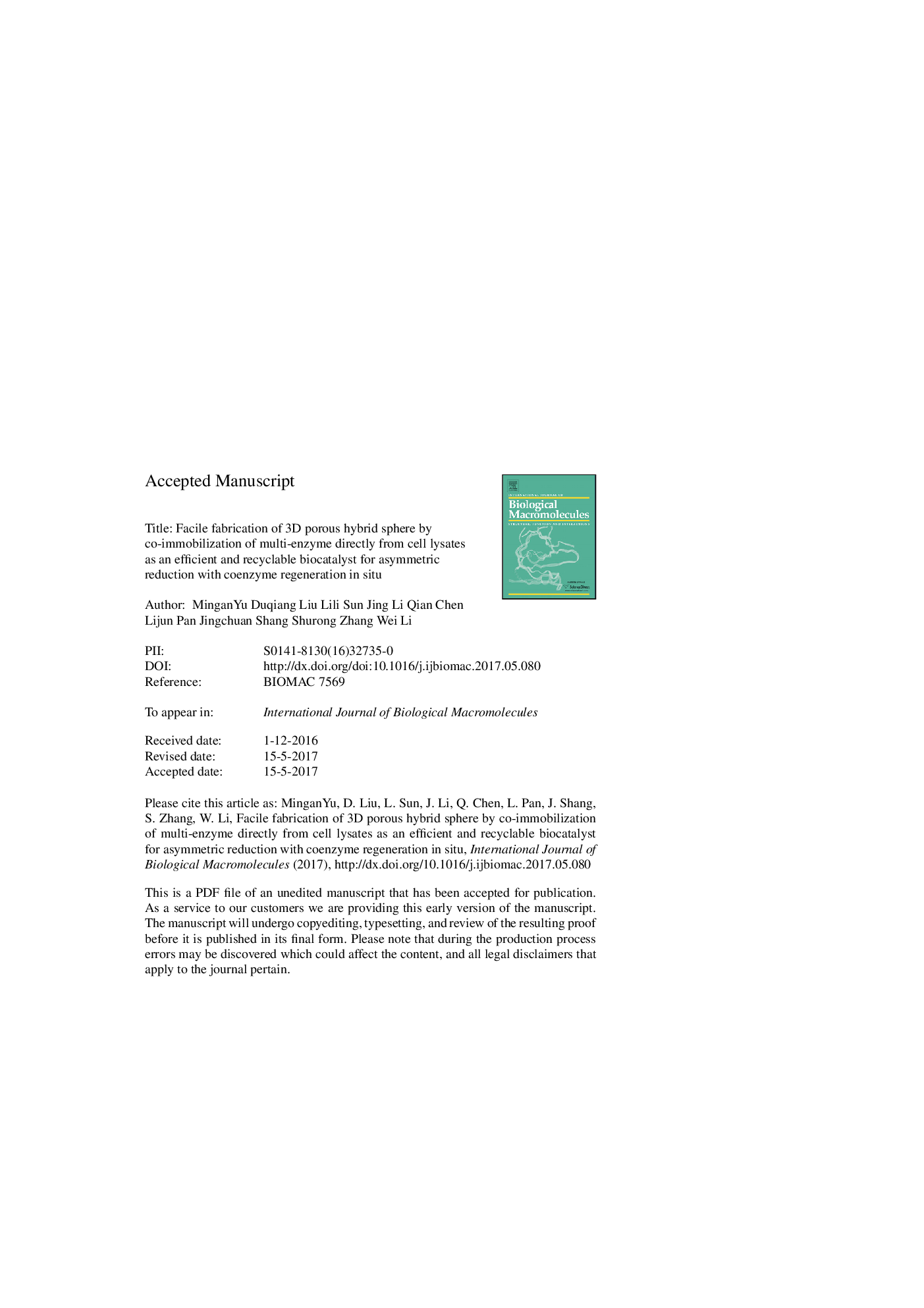| Article ID | Journal | Published Year | Pages | File Type |
|---|---|---|---|---|
| 5511871 | International Journal of Biological Macromolecules | 2017 | 42 Pages |
Abstract
Ni2+-agarose bead-wrapped multi-enzyme/inorganic hybrid sphere composed of the immobilized enzymes as organic component and NaH2PO4 and NaCl as inorganic component was developed by co-immobilizing extracellular His-tagged 3-quinuclidinone reductases and glucose dehydrogenase without pre-purification. The resulting biocatalysts has 3D porous architectures as confirmed by SEM and FESEM, and it enabled the continuous biotransformation of 3-quinuclidone to (R)-3-quinuclidinol with cofactor regeneration in situ. The 3D porous biocatalysts were formed via three steps: First, immobilization of the His-tagged enzymes directly from the cell lysates supernatant. Next, formation of enzyme aggregates, ribbons and gels. Finally, the enzymes, the formed aggregates/ribbons/gels and salt were incorporated to the foam and then covered the Ni2+-agarose bead. The technique made the immobilization of these enzymes effective such that specific enzyme loading of 60.8 mg/g support and enzyme loading efficiency of 92.3% were achieved. As a direct consequence, the biocatalyst catalyzed the conversion of 3-quinuclidinone (204 g/L) to (R)-3-quinuclidinol in 100% yield and 100% ee at 4.5 h, and the recyclability of the biocatalyst was excellent, retaining > 95% conversion yield and 100% ee even after the fifteenth runs. Overall, our strategy is demonstrated to be a promising method for developing efficient and robust biocatalyst for asymmetric synthesis.
Related Topics
Life Sciences
Biochemistry, Genetics and Molecular Biology
Biochemistry
Authors
Mingan Yu, Duqiang Liu, Lili Sun, Jing Li, Qian Chen, Lijun Pan, Jingchuan Shang, Shurong Zhang, Wei Li,
